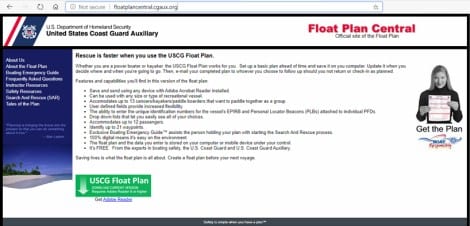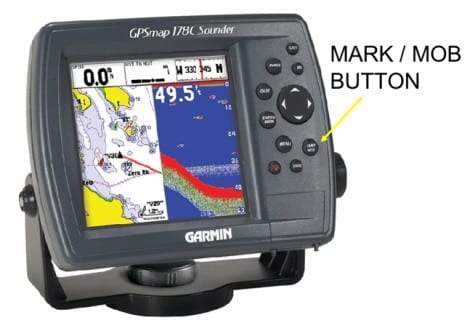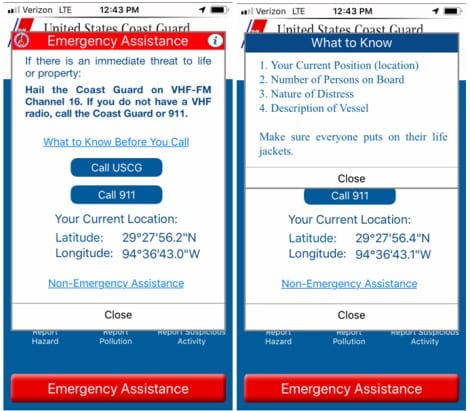 By Bob Currie, Recreational Boating Safety Specialist,
By Bob Currie, Recreational Boating Safety Specialist,
U. S. Coast Guard Auxiliary Station Galveston Flotilla
This column involves a report of two deaths on the water in Galveston Bay. Both were unnecessary. By analyzing what went on and what could have been done to prevent these deaths, I hope that at least some recreational boaters will recognize their life-threatening bad habits and change them before it is too late.
The Station Galveston Flotilla of the US Coast Guard Auxiliary operates out of the USCG Station Galveston base on Galveston Island. They aid the Coast Guard by providing maritime observation patrols in Galveston Bay; by providing recreational boating vessel safety checks; and by working alongside Coast Guard members in maritime accident investigation, small boat training, providing a safety zone, Aids to Navigation verification, in the galley, and watch standing.
Root Cause of the Disaster
A disaster is a sudden event, such as an accident or a natural catastrophe, that causes great damage or loss of life. In this disaster two lives were lost and a third person spent several hours in the water clinging to a life jacket. Some disasters are preventable, and that is the case here. The root cause of the disaster is quite simple: failure to wear a life jacket. We see this almost on a weekly basis in our area. In this case, a woman fell overboard and the operator jumped in to try to save her. Neither had life jackets on. At some time the young daughter of the operator grabbed a life jacket and jumped in to try to save the other two. At this point wind and tide separated the boat from the persons in the water, and the boat washed up on shore. It wasn’t until the boat was found on shore that a search was begun. One body eventually washed ashore. One body was found in the water. The young girl was found clinging to the life jacket. The GPS tracking feature on the boat was turned off. All the other life jackets as well as the throw cushion were found stowed in the hold. The boat’s stern ladder was deployed. There is more to the story, but there is enough information here to discuss what could have been done differently in order to have a better outcome. Below are some best practices that could have prevented this disaster or mitigated the outcome to save the lives that were lost.
Wear Life Jackets at All Times
There is never a time when it is safe to take your life jacket off when you are on the water. Some people think that if they aren’t moving then it is safe to take their life jacket off. The incident in which the Kemah Chief of Police drowned is a case in point. His boat was stationary when it was struck by the wake of a passing ship and he fell overboard, hitting his head on the way overboard and drowning. We see this pattern often with kayakers who are struck on the head by their own kayak when it capsizes. I lost a high school classmate when he jumped in the water to unfoul his propeller which had become entangled by his ski rope. When he rose toward the surface he hit his head on the bottom of the boat and was knocked unconscious. He may have been alive today if he had been wearing his life jacket. Do not think for even a second that you can put on a life jacket while in the water. If you want to prove this to yourself, try putting on a life jacket in a swimming pool. You can’t do it even in calm water, let alone in the Gulf of Mexico. The young girl who survived was lucky enough to remain alert enough to keep holding onto the life jacket. She was lucky that the heavy wave action did not pull it away from her.
Never Enter the Water to Try to Save Someone
The Coast Guard requires that you have a Coast Guard approved throw cushion immediately available for instances like this. In this case the throw cushion was stowed in the hold. It’s called a throw cushion for a reason. It is meant to be thrown to a person in the water so they can save themself from drowning. What most often happens when one person jumps in to save another is you end up with two drowned persons. Approaching a drowning person in the water is the last thing you want to do. Instinct will cause a drowning person to latch on and pull you underwater. I learned this during Boy Scout lifeguard training. We learned the proper way to approach a drowning person if no other means of saving them was available, and we learned that there was a good chance we would die even with our special training.
Keep the Throw Cushion Immediately Available
Yes, we just talked about it, but the topic requires a little more explanation. Whenever I do a Coast Guard Vessel Safety Check, I find that 75% of recreational boaters do not understand the concept of “immediately available.” While life jackets must be “readily available” and may be stored in an easy to get to locker, throw cushions may not be stored. You must be able to put your hands on the throw cushion without having to dig through a storage locker. One of the most common places to keep the throw cushion is on the captain’s seat. Another note about life jackets: they may not be stowed in their original plastic wrapping. They must be ready to don.
File a Float Plan
You should never go out on the water without letting at least one person know where you are going and when you expect to return. The Coast Guard smart phone app has a nice float plan that you can send to up to three persons. It is quite detailed and will be sent automatically to the email of the persons you choose. In this case, we know that the boat operator planned to be out for no longer than four hours. We don’t know at this point if any other information was included in a float plan. If your plans change from your float plan, you need to let the persons you sent the float plan know about the changes. I do this all the time. If I am fishing in an area and want to move to another location that is not part of my float plan, I send my wife an update.

Float plans are not filed with the Coast Guard. You must let a spouse or friend know your plan, and they must understand that if you don’t report in at the agreed time that they are to notify the Coast Guard about a late boater, and give them the information from the plan. You can also find a good plan at the Coast Guard Auxiliary’s Float Plan Central at [email protected] .
Turn on GPS Tracking
One of the types of reports we get from boaters is the unoccupied boat report. Some of the time this means that someone’s boat slipped loose from its moorings and the boat floated out to sea,  but just as often it means that one or more persons are in the water waiting to be rescued, such as was the case here. No search was begun until the unoccupied boat report was made. In this case, the Coast Guard found that the GPS tracking was turned off, so there was no means of determining where to begin the search. Below is the GPS tracking of an incident where a boater went overboard and drowned. The GPS tracking was used to help locate the body. Had that person been wearing a life jacket the search might have ended in a rescue rather than a body recovery.
but just as often it means that one or more persons are in the water waiting to be rescued, such as was the case here. No search was begun until the unoccupied boat report was made. In this case, the Coast Guard found that the GPS tracking was turned off, so there was no means of determining where to begin the search. Below is the GPS tracking of an incident where a boater went overboard and drowned. The GPS tracking was used to help locate the body. Had that person been wearing a life jacket the search might have ended in a rescue rather than a body recovery.
Use the GPS Man Overboard (MOB) Function
In the case at hand, a 31-year-old female was the first to enter the water. At this time we don’t know if the boat was moving or not, but in most cases in which a person falls overboard the boat is moving. A boat can travel some distance away from the person in the water, but if the boat has a GPS the operator can hit the MOB button and then navigate back to where the person hit the water. Using the MOB is not intuitive; you must train yourself as the operator to use it. If ever a procedure was worth practicing, it is the retrieving a person in the water procedure. We do this all the time.

The easiest way to do it is for a person on board to throw a lifejacket or extra throw cushion overboard and yell “Man overboard!” The helmsman at this point should hit the MOB button and come to a stop or make a maneuver to reverse course back to the “person” in the water. Anyone can practice this when there is no nearby boat traffic.
Have a Second Operator Aboard
If only one person aboard knows how to operate the boat, you can easily find yourself in a situation where you have a boatful of people who can’t help you if you end up in the water. At least one other person aboard needs to know several things:
- How to start the engine
- How to put the engine in gear and work the throttle
- How to make an emergency call on the radio
- How to determine position using latitude and longitude
- How to re-arm the kill switch so the boat will start
The Coast Guard Auxiliary has a classroom presentation called “Suddenly in Command.” The course is for the significant others of recreational boaters. If you as the boat operator end up in the water, wouldn’t it be useful if someone knew how to crank the engine and motor back to you? Shouldn’t someone else know how to operate the marine radio so you can contact the Coast Guard in an emergency? The Coast Guard app has an emergency assistance button at the bottom of every screen. When you activate that button you are taken to a screen that gives you the option of dialing 911 for emergencies on land or calling the Coast Guard for problems at sea. The other information displayed gives you your current location by longitude and latitude, which is precisely the information needed by the Coast Guard. If you have a marine radio, that is your first option though, as our Rescue 21 System automatically determines your location for the Coast Guard Watchstander. Now, about that kill switch lanyard: if the boat operator is following Texas law and has the kill switch lanyard attached to their life jacket or wrist, when the operator goes overboard the lanyard goes overboard too. That can leave your boat dead in the water unless you keep a spare lanyard aboard and let your passengers know where it is.

Take a Safe Boating Course
Enhance the safety of your recreational boating by taking a Safe Boating Course.
Summary
Your life may depend on you following the above Safe Boating policies.
For more information on boating safety, please visit the Official Website of the U.S. Coast Guard’s Boating Safety Division at www.uscgboating.org. Questions about the US Coast Guard Auxiliary or our free Vessel Safety Check program may be directed to me at [email protected]. SAFE BOATING!
[July-20-2020]

 Posted in
Posted in 
























Very good and important information!